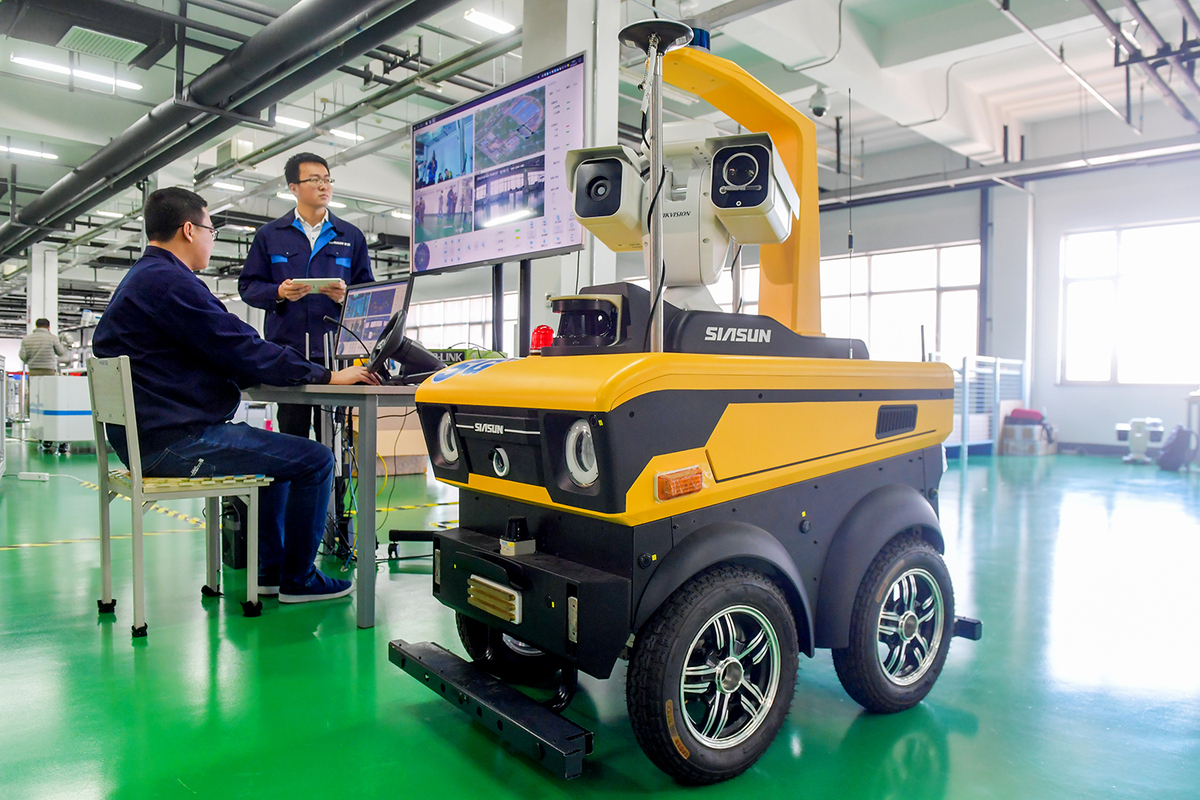
Siasun employees test a robot at the company's facility in Shenyang, capital of Liaoning province. (Photo: China Daily)
BEIJING -- An agrarian backwater that struggled to feed its population 70 years ago, China is now an indispensable supplier in the global industrial chain, manufacturing and exporting everything from daily necessities to high-speed trains.
The following are quick walk-throughs of the tectonic shifts in China's industrial strength and the drivers behind the changes, which may offer a glimpse of the country's industrial future.
-- How was the "world factory" built from scratch?
From having only mining, textile and some simple manufacturing industries to covering nearly all industrial categories, China's emergence as the "world factory" is built upon low labor and production costs compared with that of more developed countries.
The country's reform and opening-up drive in the late 1970s enabled the more adventurous entrepreneurs in coastal cities to start their own businesses, overcoming difficulties and successfully turning small workshops into big manufacturing companies.
Since then, China's manufacturing sector started to take off. World Bank data showed that China overtook the United States as the world's largest manufacturing country in terms of added value in 2010 and has retained first place ever since.
-- How China has moved up the industrial value chain?
Coming into the 21st century, China started to focus on high-tech and advanced manufacturing sectors, with a modern industrial system gradually taking shape.
Apart from the traditional "Made in China" tags on the store shelves, high-speed trains and semi-conductors are becoming the new signatures for Chinese manufacturing.
In 2017, the high-tech sector's prime operating revenue above the designated size came in at 15.9 trillion yuan (about $2.2 trillion), up 55.8 percent than the same period in 2012.
The rapid development can be attributed to the continuous investment in research and development, with its expenditure surging 83.6 percent in the same period to 318.3 billion yuan.
-- How will China's industrial strength contribute to a shared future?
Over the past decades, China's industrial development has benefited from open cooperation with other countries, and its gaining strength will in turn help deliver more opportunities for other market players.
In June 2019, China officially approved 5G commercial services, marking the start of a smart new era as the application of the superfast wireless technology helps connect more things, services and market players.
Foreign enterprises including Nokia, Ericsson, Qualcomm and Intel have been deeply involved in the experimentation of the technologies, and Chinese regulators have welcomed enterprises from home and abroad to actively participate in the building, application and promotion of its 5G network and share the sector's development dividends.
As the 5G case has showed, China's industrial ambition means more opportunities for domestic and foreign companies to compete and prosper together. The one propeller for the country's industrial upgrading is to keep opening up its market and economy to the world.


